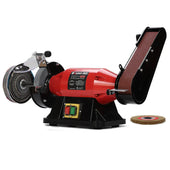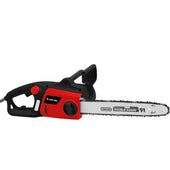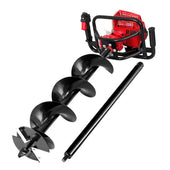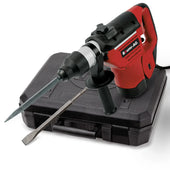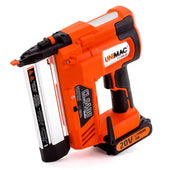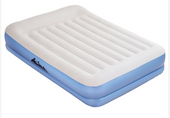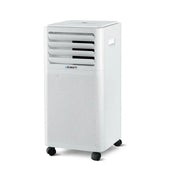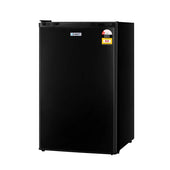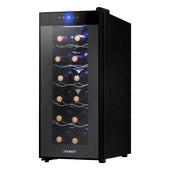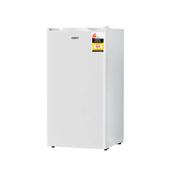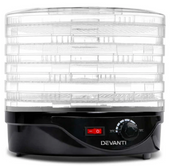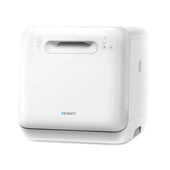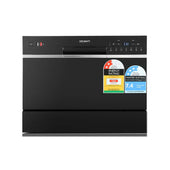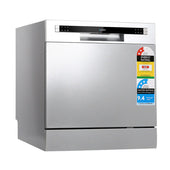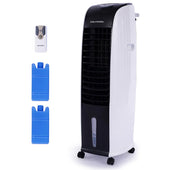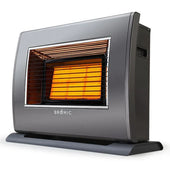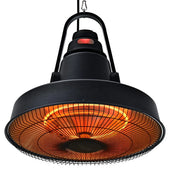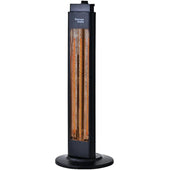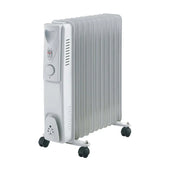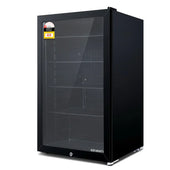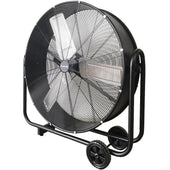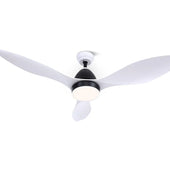Introduction: Understanding the Desktop PC Marketplace
The desktop PC marketplace caters to diverse needs, ranging from casual users to professional gamers and content creators. It is characterised by two predominant options: pre-built systems and custom-built PCs. During Days, Pre-built desktops are designed to deliver convenience, offering ready-to-use configurations tailored to specific performance needs. On the other hand, custom-built PCs allow greater control over components, enabling users to optimise performance, compatibility, or budget.
The market is influenced by technological advancements, emerging trends, and varying user demands. Manufacturers continually innovate to meet expectations, while enthusiasts gravitate towards personalised solutions. Understanding the distinctions between pre-built and custom systems is crucial to navigating these choices effectively.
What Are Pre-Built Desktop Systems?
Pre-built desktop systems refer to computers assembled and sold by manufacturers or retailers as complete, ready-to-use units. These systems come with pre-installed hardware components, such as processors, graphics cards, RAM, storage, and power supplies, ensuring compatibility and seamless operation. Manufacturers design them for various purposes, including gaming, office work, media editing, and general use.
Key Characteristics:
- Ease of Use: Designed for immediate usage without requiring technical assembly.
- Standardised Configuration: Components are pre-selected and optimised for performance.
- Warranty and Support: Typically come with manufacturer warranties and technical assistance.
- Availability: Widely accessible in stores and online markets.
Transitioning from pre-built systems to custom systems involves understanding individual needs.
What Are Custom-Built Desktop Systems?
Custom-built desktop systems are computers assembled from individually selected components to meet specific performance, budget, or aesthetic requirements. Unlike pre-built systems, which come pre-assembled by manufacturers, custom systems allow users to choose each part, such as the processor, motherboard, RAM, GPU, and storage.
This flexibility lets users optimise hardware for specific needs, like gaming, video editing, or lightweight daily tasks.
Custom desktops are often favoured for their upgradability, as users can swap out individual components over time. While building these systems requires technical knowledge, many enthusiasts find the process rewarding. Tools, guides, and online support make custom building accessible.
Cost Comparison: Pre-Built vs. Custom Systems
When considering cost, pre-built systems often include streamlined pricing with bundled warranties, limiting unexpected expenses. These systems frequently offer economies of scale, as manufacturers purchase parts in bulk, enabling lower prices on individual components. Additionally, pre-built options usually involve fewer upfront costs, including assembly fees, as the system is ready to use upon purchase.
Custom systems, while potentially higher in initial expenditures, afford more flexibility for tailoring hardware to specific needs. The buyer has control over component pricing, potentially sourcing parts during discounts or sales. However, additional costs may arise for professional assembly, troubleshooting, or shipping individual components. Transitioning costs between these two options highlights the importance of both upfront and long-term budgeting considerations.
Performance: Which Option Offers Better Capabilities?
When comparing pre-built and custom desktop systems, performance largely hinges on individual needs and component selection. Pre-built systems are meticulously optimised by manufacturers, ensuring hardware compatibility and delivering stable performance across standard workloads. However, custom desktops allow users to cherry-pick high-performance components like processors, GPUs, and RAM, catering to power-intensive activities such as gaming or content creation.
Key considerations affecting performance include:
- Component Quality: Custom builds often boast higher-tier components, while pre-built systems may use slightly lower-quality parts to reduce costs.
- Upgradability: Custom desktops enable easier upgrades over time, ensuring sustained peak performance as technologies evolve.
- Cooling Solutions: Customised systems can integrate advanced cooling setups for demanding tasks, whereas pre-built models typically use standard cooling designs.
Performance ultimately boils down to user-defined priorities, with custom builds leaning towards maximising capabilities.
Ease of Use and Convenience: Plug-and-Play or DIY?
Pre-built desktop systems offer a plug-and-play experience, appealing to those prioritising simplicity and immediacy. These systems come pre-assembled, configured, and often include pre-installed operating systems and drivers. Users only need to unbox, plug in, and start working or gaming, making them an ideal choice for beginners.
On the other hand, custom desktops require assembling individual components, such as the motherboard, CPU, RAM, and power supply. This DIY process provides flexibility but demands technical know-how, patience, and time. While rewarding for enthusiasts, troubleshooting and compatibility checks can deter inexperienced users.
Ultimately, the choice hinges on balancing convenience against the desire to customise and optimise performance.
Upgradeability and Longevity: Pre-Built Limitations vs. Custom Flexibility
Pre-built desktops often come with proprietary components that can restrict upgrade options. Manufacturers may use non-standard motherboard layouts or unique power connectors, limiting compatibility with aftermarket parts. Cooling systems and cases in pre-built systems are typically optimised for initial specifications, leaving little room for better hardware integration.
In contrast, custom desktops offer unmatched flexibility. Builders can select standardised components, enabling easier future upgrades. Options such as modular power supplies, spacious cases, and robust cooling systems ensure support for advanced hardware.
Longevity also differs significantly. While pre-built systems may become obsolete quicker, custom PCs are adaptable, extending their operational lifespan through incremental upgrades.
Warranty and Technical Support Considerations
Pre-built desktop systems typically come with comprehensive warranties provided by manufacturers, often covering hardware issues for one to three years. These warranties offer peace of mind, ensuring repair or replacement options for defective components without extra cost. Additionally, pre-built system providers usually include dedicated technical support, accessible via phone, email, or chat, making troubleshooting convenient.
Custom-built systems, meanwhile, rely on individual component warranties from multiple manufacturers. Though this allows for targeted replacements, it can complicate the warranty claim process. Technical support options may also be fragmented, requiring users to contact different vendors for assistance. This contrast highlights varying levels of post-purchase support and risk.
Design Aesthetics: Choosing Between Standard and Personalised Builds
Selecting between standard pre-built systems and personalised custom builds often hinges on aesthetic preferences. Pre-built desktops typically feature generic designs with limited customisation options, focusing on universal appeal. These systems generally use standardised cases and components that may lack unique visual flair.
Custom-built systems, by contrast, allow complete freedom to tailor aesthetics. Users can choose from premium cases, RGB lighting configurations, and unique colour schemes to match personal tastes. Options include tempered glass panels, sleek aluminium designs, or bold gaming themes.
While pre-built systems offer practicality, custom builds cater to individualised artistry, making them ideal for users seeking distinct visual identity. Each choice reflects priorities, from simplicity to creativity, ensuring diverse appeal.
Time Investment: Building from Scratch vs. Buying Off-the-Shelf
When considering time investment, the decision between building a custom desktop and purchasing a pre-built system hinges on the complexity of setup and initial availability.
Building from Scratch
- Component Selection: Requires extensive research to ensure compatibility and optimal performance.
- Assembly Time: Involves manually assembling hardware, wiring, and troubleshooting issues.
- Software Installation: Operating system and drivers must be installed and configured.
- Learning Curve: Beginners may invest more time familiarising themselves with processes and tools.
Buying Off-the-Shelf
- Plug-and-Play: Ready-to-use systems dramatically reduce setup time.
- Pre-Installed Software: Includes configured operating systems and essential drivers.
- Immediate Availability: Faster acquisition compared to sourcing individual components.
Prioritising convenience often leads buyers to prefer pre-built systems, but custom builds allow greater freedom and control for those willing to invest time.
Who Should Choose Pre-Built Desktops?
Pre-built desktops are ideal for those who prioritise convenience over customisation. They are particularly suited for individuals less familiar with hardware specifications or those who prefer a hassle-free setup. Casual users who rely on their PCs for web browsing, office tasks, and media consumption often benefit from the simplicity and ease of use pre-built systems offer.
Professionals with tight deadlines may gravitate towards pre-built desktops to avoid the time investment required for assembling a custom PC. Moreover, gamers who require an immediate solution but lack technical expertise can opt for pre-configured systems designed for gaming performance. Warranty coverage and technical support can also make them appealing to users seeking peace of mind.
Who Should Opt for Custom-Built PCs?
Custom-built PCs are ideal for individuals seeking tailored performance to meet specific needs. Enthusiasts who enjoy greater control over hardware configurations will benefit from the flexibility these systems offer. Gamers, content creators, and professionals reliant on resource-intensive applications can customise components like GPUs, CPUs, and RAM to maximise efficiency. Those looking for unique designs or features not found in pre-built models may also prefer custom PCs.
People with experience in assembly or those willing to learn can reduce costs by building their own systems. Additionally, custom PCs often appeal to those who value scalability, as they allow for easier upgrades in the future.
Potential Pitfalls of Pre-Built and Custom Systems
Both pre-built and custom desktop systems come with certain drawbacks that merit consideration.
Pre-Built Systems
- Limited Upgrade Paths: Pre-built systems often use proprietary components, which can restrict future upgrades and modifications.
- Higher Costs for Features: These systems may include unnecessary software or components that increase costs without adding value to the user.
- Quality Trade-offs: Manufacturers may use lower-quality parts to cut costs, leading to potential issues with performance and reliability.
- Support Constraints: Warranty and support services might limit user intervention, discouraging hardware replacements or repairs.
Custom Systems
- Complex Assembly: Building a custom system requires technical knowledge, time, and effort, which may deter beginners.
- Compatibility Issues: Improperly matched components can cause system instability or failure.
- Warranty Ambiguity: Individual warranties on parts complicate claims compared to a single warranty offered by pre-built options.
- Initial Cost Risks: A miscalculation in budget or part selection could lead to steep initial expenses for users.
Environmental Impact: Sustainability and Electronic Waste Factors
The debate between pre-built and custom desktop systems extends to environmental considerations. Pre-built systems generally benefit from streamlined manufacturing, often resulting in reduced energy and material waste during production. Manufacturers typically adhere to stricter recycling and disposal guidelines, enhancing sustainability. Conversely, custom desktops may involve sourcing individual components, which can increase packaging waste and carbon footprint due to separate shipping.
Electronic waste is a critical factor. Custom setups often allow for easier upgrades, prolonging the system’s lifespan and reducing e-waste. However, pre-built systems may face compatibility limitations, potentially leading to entire system replacements rather than component swaps.
Wrapping Up: Making the Right Choice for Your Needs
When deciding between pre-built and custom desktop systems, the primary consideration lies in individual priorities. A pre-built system offers convenience, quick setup, and warranty coverage, making it ideal for users who prioritise ease of use or lack technical expertise. Conversely, a custom desktop provides unparalleled flexibility, allowing users to tailor hardware to their specific needs, ensuring optimal performance for tasks like gaming, graphic design, or advanced computing.
Budget also plays a critical role. While custom builds may offer better value for performance, pre-built systems provide fixed costs without dealing with fluctuating component prices. Assessing upgrade potential, desired performance levels, and personal preferences ensures an informed choice.



